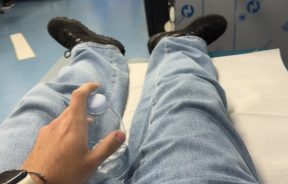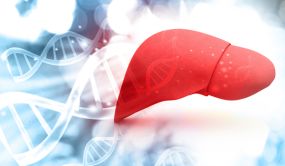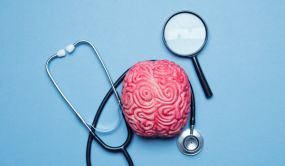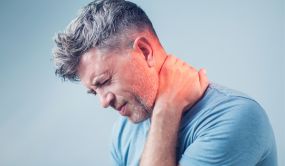Stroke Symptoms You Can't Ignore: The FAST Method to Spot and Prevent a Stroke
Stroke remains one of the leading causes of death and long-term disability worldwide. Recognizing its symptoms early and understanding how to prevent it can significantly improve outcomes and save lives. This comprehensive guide explores common stroke symptoms, the FAST method for quickly identifying strokes, and practical strategies for stroke prevention.
Understanding Stroke Symptoms
Stroke symptoms vary depending on which part of the brain is affected. Recognizing these symptoms promptly is vital because immediate medical intervention can drastically reduce long-term damage. Common stroke symptoms include:
- Sudden numbness or weakness, especially on one side of the body
- Sudden confusion or trouble understanding speech
- Sudden vision problems, such as blurred or loss of vision in one or both eyes
- Sudden difficulty walking, dizziness, or loss of balance
- An abrupt, severe headache with no apparent cause
While these symptoms can appear suddenly and be severe, some individuals may experience more subtle signs, underscoring the need for awareness and education to ensure timely recognition.
What Is the FAST Method?
The FAST method is a simple, effective way to identify the most common and recognizable signs of stroke, facilitating quick action. This acronym helps individuals recall the key symptoms and emphasizes the urgency of calling emergency services immediately.
- F – Face drooping: One side of the face may droop or appear lopsided. Ask the person to smile and check if the smile is uneven.
- A – Arm weakness: Weakness or numbness in an arm, where one arm may drift downward when raised. Ask the person to raise both arms and observe any asymmetry.
- S – Speech difficulty: Slurred speech, difficulty speaking, or inability to understand simple sentences. Ask the person to repeat an introductory phrase, such as "The sky is blue," and note any difficulty.
- T – Time to call emergency services: Immediate medical attention is critical when any FAST symptoms are observed
The phrase underlines the importance of acting quickly, as every minute counts.
In some extensions of the FAST acronym, additional signs, such as vision changes, balance or coordination problems, and severe headache, are included to provide a broader understanding of stroke symptoms.
Why Is Time a Critical Factor?
The principle of "time is brain" underscores the importance of rapid response in stroke cases. Brain cells die quickly when deprived of oxygen-rich blood, with approximately 1.9 million neurons lost each minute without intervention. Early treatment can preserve brain function, minimize disabilities, and even prevent death.
How to Prevent a Stroke
Prevention begins with lifestyle choices and risk factor management. Several modifiable factors strongly influence stroke risk, according to Harvard Health. These include:
- Managing high blood pressure (hypertension), a leading cause of stroke
- Controlling high cholesterol and diabetes
- Maintaining a healthy weight and engaging in regular physical activity
- Eating a balanced diet rich in fruits, vegetables, and whole grains
- Quitting smoking and limiting alcohol intake
- Regular medical check-ups and adherence to prescribed medications
Lifestyle Changes to Reduce Risk
Adopting a heart-healthy lifestyle can significantly lower the chances of stroke. This includes exercising regularly, avoiding tobacco, and limiting dietary salt and saturated fats. Such changes improve cardiovascular health, making the brain less susceptible to stroke.
Recognizing and Acting on Warning Signs
Beyond the classic FAST symptoms, awareness of transient ischemic attacks (TIAs) or "mini-strokes", which produce temporary symptoms, can prevent full strokes. Immediate medical evaluation after a TIA is essential, as it indicates a higher risk for a future major stroke.
Recognizing the signs of a stroke with the FAST method can be life-saving. Facial drooping, arm weakness, speech difficulty, and the necessity of calling emergency services immediately are critical components of stroke awareness.
Complemented by proactive lifestyle adjustments and risk management, these strategies form the cornerstone of stroke prevention, as per the Centers for Disease Control and Prevention. Public education, timely intervention, and healthy living habits are essential in the fight against stroke and its long-term consequences.
Frequently Asked Questions
1. What does the stroke rehabilitation process involve?
Stroke rehabilitation focuses on helping survivors regain independence by improving physical, speech, cognitive, and daily living skills. It includes physical therapy to enhance movement, occupational therapy for everyday tasks, and speech therapy for communication. Rehab usually starts soon after the stroke and can continue for months or years, depending on individual recovery needs.
2. How soon should rehabilitation begin after a stroke?
Rehabilitation ideally begins within 24 to 48 hours after a stroke, while the patient is still in the hospital if medically stable. Early rehab is associated with better recovery outcomes and helps prevent complications from immobility.
3. Can stroke survivors experience emotional or cognitive challenges?
Yes, stroke survivors often face emotional issues such as anxiety, depression, and cognitive impairments, including memory loss and difficulty concentrating. Cognitive rehabilitation and therapies such as cognitive behavioral therapy (CBT) are essential components of comprehensive stroke recovery.
4. How long does the stroke recovery process usually take?
Recovery varies widely; some individuals see improvement within weeks, while others may require months or years of rehabilitation, especially for severe strokes. Recovery plans adapt over time to a survivor's changing needs and progress.




























